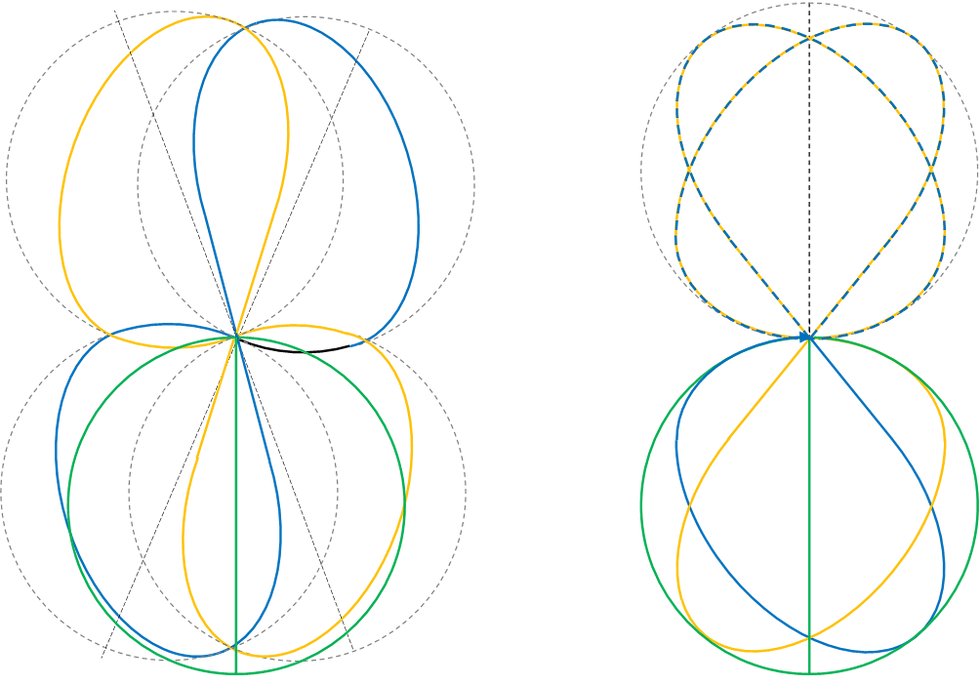Fusion#2: The Making of Deuterium
- Kalle Lintinen
- Sep 18, 2022
- 3 min read
In the past two posts I have talked about the chirality of the orbital of the neutron vs that of the proton/electron. I was thinking about the ‘butterfly’ model of two separate orbitals, when it hit me! This is what nuclear fusion, and the release of energy is about: in nuclear fusion the proton and neutron fuse into a single orbital! While this might sound overly complicated, it really isn’t, at least compared to trying to understand it through solving wave functions.
Again, the usual disclaimer. I cannot say that what I am proposing is certain. However, if one assumes that atoms are formed of orbitals of strings, then my proposal is the likeliest option.
The reason why I talked about ‘butterfly’ orbitals in the previous posts is that as a chemist, I am not at all familiar with nuclear reactions and the transmutation of elements. This is what takes place at the core of the sun, when hydrogen is fused into helium. However, if I put my fusion physicist's hat on once again, I can consider what happens in a nuclear reaction.
At first, we can consider the chiral butterfly orbital. In this case the proton and neutron are fully separate but orbiting in mirror directions. This orbital takes up a considerable amount of space compared to the fused state. In the extreme conditions of the center of the sun or the fusion reactor, these butterfly wings can be pushed together. However, the wings cannot be pushed entirely shut, as depicted below left. As soon as the intersections of the loops meet, the orbitals cannot be pushed further, as depicted below right.

What takes place is a swap of loops. In these reactions the parallel loops, where the Planck spheres that are moving in the same direction, undergo an equivalence of metathesis or chain transfer. The conditions which forces the proton/electron and neutron together to make deuterium results in the release of a neutrino and a positron.
In the next step of solar fusion a proton is added into deuterium, releasing a gamma ray and forming a Helium-3 isotope (with one neutron). Next, two of these Helium-3 isotope fuse, releasing high energy hydrogen atoms and a Helium-4 isotope. As far as I understand this, all of the energy in the final reaction is released as kinetic energy, or heat.

So, what is the shape of the fused deuterium orbital? While I cannot say for sure, it appears that the fusing of the orbitals creates two circular loops. These hybrid orbitals are marked green in the scheme below. I didn’t even know it before fitting the orbitals together in Blender, but the fusing also makes the two hybrid orbitals to be perpendicular to each other. While this might not be at all obvious to you, the reader, the shape you see is an emergent property of fitting the orbitals together.

It is also possible that fusion is always a symmetric process, where neutrons and proton/electron fuse on both sides of the orbital. I find it hard to say for sure, which of these processes reflect experimental data better. What is known, that this deuterium atom behaves chemically quite identically to hydrogen, but is in invisible in regular NMR spectroscopy. This relates to their different spin. While the spin of hydrogen is ½, the spin of deuterium is 1.

Just looking at the binding energies of different atoms/isotopes I get the impression that deuterium is only fused on one end and that both of the proton-neutron pairs of helium are fused on both sides. As a matter of fact, the huge difference in binding energy might point to the fusing of two proton-neutron pairs might also release a lot of energy. I'm still on the fence which of these two fusions release more energy.

I’m quite excited about the idea in general, but acknowledge that it's such a new concept that the probability of error is quite high. The curious thing, though is that once I have stated a hypothesis, it's much easier for me to debunk and correct myself.
Perhaps, next I will attempt to fuse the four simple orbitals of my initial Helium model into a single orbital. This might give the best clue whether the concept works.




Comments